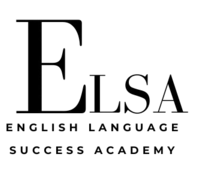In today’s global business environment, the ability to deliver compelling presentations in English is a crucial skill. Whether you’re pitching to clients, presenting to colleagues, or speaking at international conferences, your presentation skills can make or break your professional success. This article explores key strategies for structuring business presentations, delivering effective openings and closings, and handling Q&A sessions with confidence.
Structuring a Business Presentation
A well-structured presentation is like a well-told story – it engages the audience, conveys information clearly, and leaves a lasting impression. Here’s a proven structure for business presentations:
1. Introduction: Start with a hook to grab attention, state your purpose, and provide an overview of what you’ll cover.
2. Main Body: Divide your content into 3-5 key points or sections. For each point:
– State the main idea
– Provide supporting evidence or examples
– Explain its relevance or implications
3. Conclusion: Summarize your key points, restate your main message, and end with a call to action or thought-provoking statement.
4. Q&A Session: Allow time for questions and discussion.
Remember to use transitions between sections to maintain a smooth flow. Visual aids like slides should complement your spoken words, not replace them. Keep your slides simple, using bullet points, images, and graphs to illustrate key concepts.
Effective Opening Techniques
The first few minutes of your presentation are crucial for capturing your audience’s attention and setting the tone. Here are some powerful opening techniques:
1. Start with a provocative question: “What if I told you we could double our profits in six months?”
2. Share a surprising statistic: “Did you know that 75% of our target market has never heard of our product?”
3. Tell a relevant anecdote: A brief, engaging story that relates to your topic can instantly draw listeners in.
4. Use a powerful quote: Choose something thought-provoking and relevant to your subject matter.
5. Present a problem: Introduce a challenge your audience faces, then promise to provide solutions.
Whatever technique you choose, ensure it’s relevant to your topic and audience. Practice your opening until it feels natural and confident.
Closing Techniques That Leave a Lasting Impression
Your closing is your last chance to drive home your message and inspire action. Here are effective closing techniques:
1. Circle back to your opening: If you started with a question or anecdote, refer back to it, showing how your presentation has addressed it.
2. Summarize key points: Briefly recap your main ideas to reinforce your message.
3. Call to action: Clearly state what you want your audience to do next.
4. Paint a vision: Describe the positive outcomes of implementing your ideas.
5. End with a powerful quote or statement: Choose something that encapsulates your main message and is easy to remember.
Remember, your energy should peak at the beginning and end of your presentation. Deliver your closing with conviction and enthusiasm.
Handling Q&A Sessions Confidently
Q&A sessions can be daunting, especially in a second language, but they’re also an opportunity to showcase your expertise. Here’s how to handle them with confidence:
1. Prepare in advance: Anticipate potential questions and prepare answers.
2. Listen carefully: Make sure you understand the question before answering. It’s okay to ask for clarification.
3. Keep answers concise: Provide brief, clear responses. If more detail is needed, offer to discuss further after the session.
4. Be honest: If you don’t know the answer, say so. Offer to find out and follow up later.
5. Maintain composure: Stay calm and professional, even if faced with challenging questions.
6. Bridge back to your key messages: Use questions as opportunities to reinforce your main points.
7. Manage time effectively: If there are many questions, prioritize the most relevant ones.
Practice these skills regularly, perhaps with colleagues or in a language exchange group, to build your confidence in handling Q&A sessions in English.
Elsa Says:
Mastering presentation skills in English is a journey that requires practice and dedication. By focusing on structuring your presentations effectively, crafting compelling openings and closings, and handling Q&A sessions with confidence, you can significantly enhance your ability to communicate your ideas and influence your audience. Remember, the key to a great presentation lies not just in what you say, but how you say it. Cultivate clarity, confidence, and connection with your audience, and you’ll be well on your way to becoming a masterful presenter in any language.



